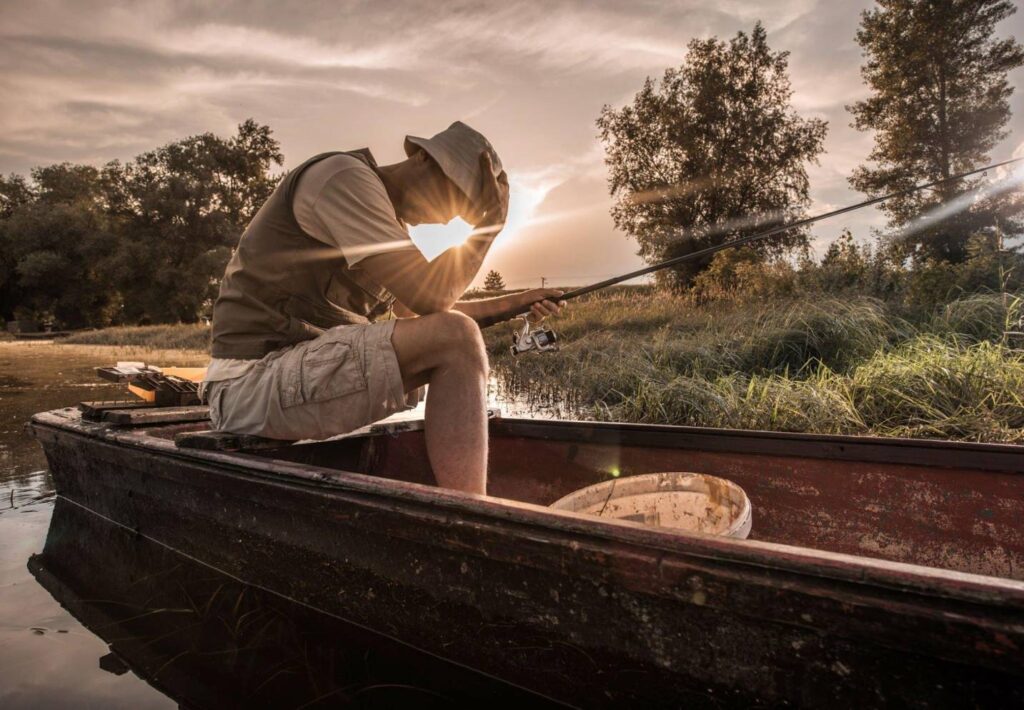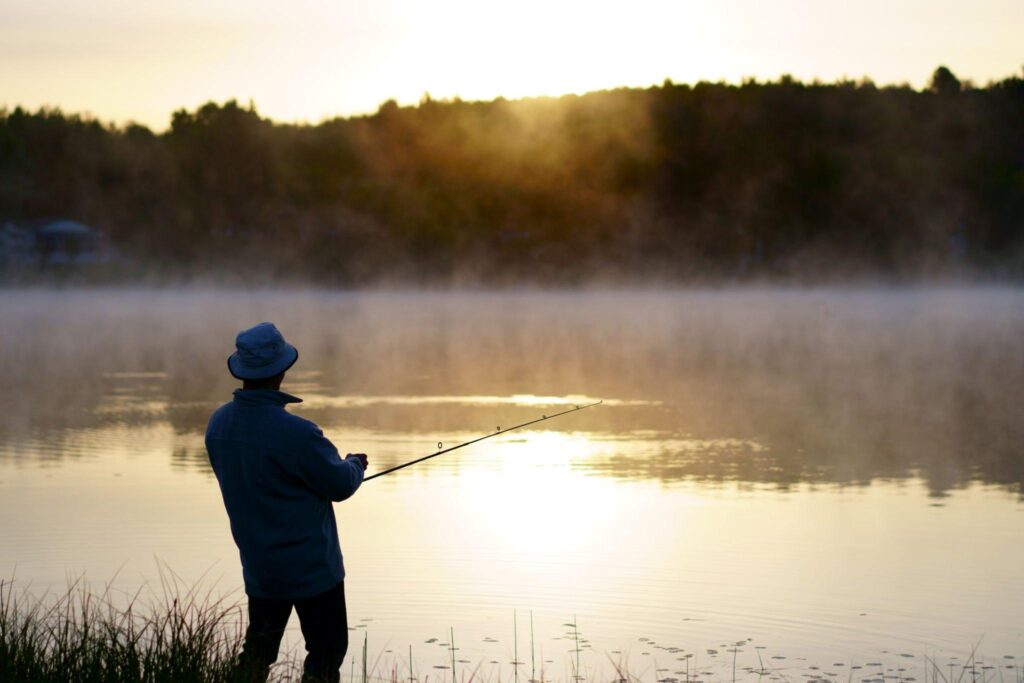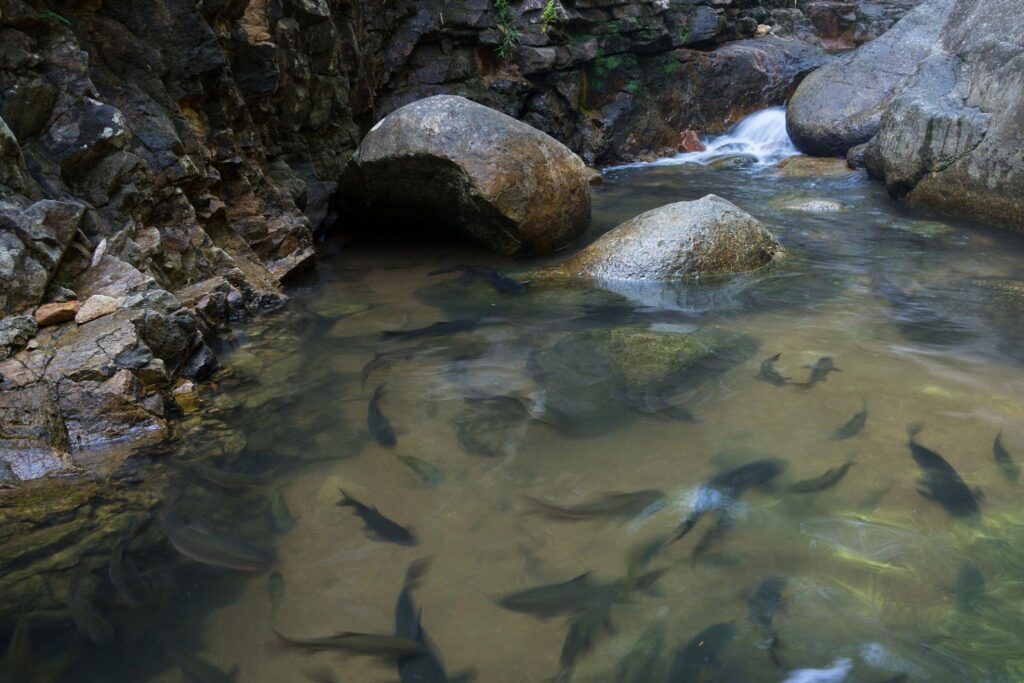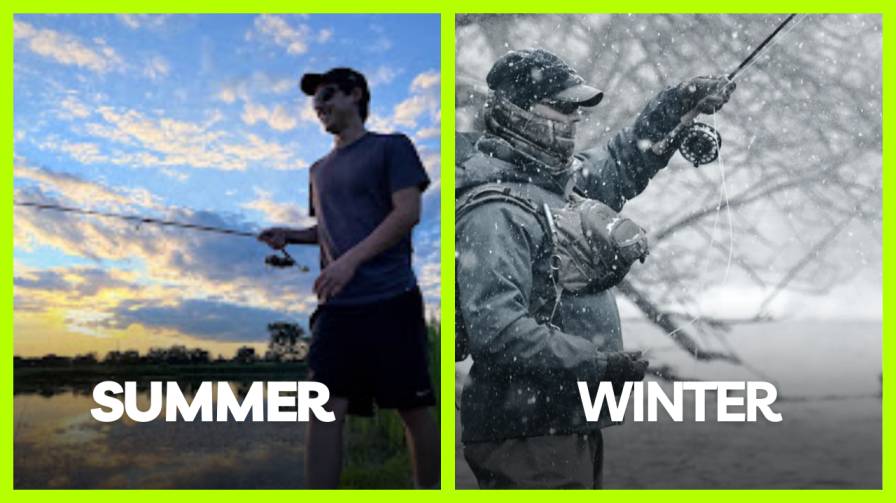
There is indeed the worst time of day to go fishing. Every angler knows that timing is everything when it comes to fishing success.
The time of day you head out on the water can mean the difference between reeling in a big catch and getting skunked. While fish are active and feed throughout the day, there are certainly peak activity periods and lulls to take note of.
In this guide, I’ll discuss how fish behavior and feeding change based on time of day and seasons. Also, I’ll go over the best fishing times to target, as well as the worst time of day to go fishing.
Table of Contents
What Is the Worst Time of Day to Go Fishing?
The worst time of day to go fishing is the afternoon, around midday from 12-4 p.m. when the sun is at its peak. Fish become less active and stop feeding as much due to the bright overhead light and warm water temperatures at this time of day.

Afternoon is the worst time of day to go fishing because the high sun and warmer water drive fish deeper where they are less likely to expend energy to feed. Midday heat makes fish lethargic as they look for cooler spots with more shade. Feeding decreases significantly compared to peak morning and evening activity.
Peak Fishing Times vs. Times to Avoid
Early Morning and Dusk: Prime Fishing Times

The early morning and dusk periods consistently provide peak fishing action for most species. Low-light conditions make fish feel secure while cooler temperatures keep them invigorated. The fact that fish are already in active feeding mode makes it a prime time to catch them off guard and entice strikes.
Focus on fishing areas like main lake points, channel edges, or areas of moving water during these peak windows. Productive lures include topwater poppers, stick baits, and waking baits that imitate vulnerable prey. Targeting shallow shorelines and weed edges can also be extremely effective at dusk and dawn.
Midday and Afternoon: Low Activity Periods

Once the sun is high overhead, fish activity tends to drop off significantly. The bright sun and warmer water drive fish into thicker cover or deeper water where they are less interested in expending energy to feed. During summer, the risk of overheating also keeps fish fairly inactive during midday hours.
Why Fish Activity Fluctuates Throughout the Day
Fish behavior and feeding are strongly connected to sunlight, temperature, and other environmental factors that shift throughout the day.

As the sun rises, increasing light and warming shallow waters spur fish to become more active in searching for food.
Peak activity is reached in the early morning hours as fish feed heavily after a long night.
As the sun reaches its midday peak, fish tend to slow down and feeding decreases. The bright overhead light and warmer temperatures make fish lethargic. Fish will look for cooler, shaded spots to hang out in during the hottest part of the day. They may still eat but at a much lazier pace.
As dusk approaches, fish perk up again for prime evening feeding time. Dimming light signals another prime activity period that can extend into the night as well. Cooling water temperatures also contribute to more energetic fish willing to chase bait and expend energy hunting.
Adjusting Your Approach During Low Activity Hours
While midday and afternoons may be the worst for fishing, there are tactics you can use to adapt and make the most of these periods:
Choosing Productive Fishing Locations
- Target shaded areas like docks, overhangs, or submerged trees
- Fish deeper zones like creek channels, holes, and ledges
- Look for cool, oxygenated moving water around riffles
- Focus on north-facing shorelines and pockets
Using the Right Baits and Lures
- Bright, bold colors and metallic finishes help visibility
- Strong-scented plastics or live bait appeal to lethargic fish
- Slow steady retrieves with pauses trigger reaction strikes
- Topwaters and noisy poppers can call fish out of cover
- Try slower silent presentations like a suspended jerk bait or lightly jigged spoon
- Upsize your offerings to intrigue inactive fish
- Mimic injured/disoriented baitfish with erratic retrieving
Focusing on Bottom-Dwelling Species
Catfish feed heavily on the bottom throughout the day and night. However, night fishing is typically more productive as cats feel safer venturing from cover under darkness. Lakes and slackwater areas hold more catfish during the hottest parts of summer days.
How Weather and Seasons Impact Fishing
The weather and seasons greatly affect fishing. Factors like water temperature, storm systems, and seasonal migrations determine where fish congregate and their feeding activity. Planning trips during optimal conditions improves your chances of catching fish.
Related: Do Fish Bite in the Rain? Strategies for Success
Fronts, Storms, and Barometric Pressure

Rising barometric pressure and approaching cold fronts typically improve biting and spur pre-front feeding activity. However, the passage of a storm front with plummeting pressure shuts down the bite. Fishing is also tough during quickly changing pressure and stormy conditions.
Summer Heat and Winter Chill

In summer, midday heat makes fish lethargic and drives them deep, worsening the midday lull. Fish only become active again once cooling evening temperatures arrive. In winter, frigid temperatures make fish inactive as their metabolism slows. Fishing is best during warmer days in winter.
Related: Where Do Fish Go In The Winter
Key Considerations for Different Fish Species
While many general patterns apply, you also have to consider the behaviors and preferences of the specific species you’re targeting:
Largemouth Bass
Research shows that largemouth bass are most active in low light conditions, with feeding peaking early and late in the day Bass feeding habits study.
Largemouth bass follow temperature and light availability closely. They prowl shallow waters at dawn and dusk but retreat to deeper, cooler water avoiding sun exposure during hot days. Target off-shore structures like humps, ledges, and creek channels to catch lethargic midday bass.
Trout
Trout requires cooler, highly oxygenated water making midday summer fishing tough. The optimal feeding water temperatures for trout are between 45 and 65 degrees Fahrenheit
Trout requires cooler, highly oxygenated water making midday summer fishing tough. However, mornings and evenings they’ll feed actively in riffles and rapids. In winter, target deeper slower pools and holes during warmer daylight hours.
Catfish
Catfish feed heavily on the bottom throughout the day and night. For hot midday action, focus on channels, holes, and bottom structure with cut bait. But the peak times are at night under cover of darkness.
Frequently Asked Questions
What time of day do fish bite most?
Early morning and dusk are the top feeding times for most fish species when they are most active. The low light and moderate temperatures create prime fishing conditions.
Is the afternoon a bad time to fish?
Overall, afternoons tend to be the worst time for fishing. The bright overhead sun and warmer water make fish sluggish and less likely to bite. Success is still possible by adjusting locations and tactics.
Is it good to fish at 2 pm?
While not ideal, you can still catch fish at 2 p.m. Focus efforts on shaded spots, deeper areas, and bottom-dwelling catfish for your best chance of midday success. Temper expectations compared to peak dawn and dusk activity.
What is the #1 worst time to fish?
The afternoon and midday hours around 2 p.m. are generally the worst time for fishing. The high sun and warm temperatures cause fish to be fairly inactive and evasive during these peak daylight hours.
Is it bad to go fishing at night?
Night fishing can be highly productive, especially for species like catfish, baitfish, and bass that utilize darkness to their advantage when feeding. Just take proper night fishing safety precautions and use lights to see lines and hooks.
Conclusion
Early morning and dusk offer the most productive fishing windows when targeting most species. Midday periods tend to have less fish activity making the afternoon the worst time of day to go fishing.
If you shift locations, using instincts-triggering lures, or focusing on bottom dwellers you can still entice bites even during tough midday conditions if you don’t have the choice. Pay close attention to weather patterns and know the daily rhythms and seasonal location preferences of your target species.
Avoid getting frustrated by tough conditions, and you’ll catch more fish when hitting the water, even at the worst possible times like midday.
For your best chance at success, always try to plan your fishing trips during the early morning or dusk peak activity periods!
